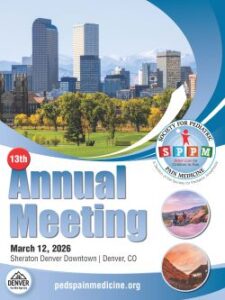An 18-year-old female presents to your office with intermittent unilateral shooting pain localized to her left costal margin for the past 10 months. The pain is worse when laughing or twisting her torso. She occasionally feels a popping sensation associated with the pain. She is a gymnast who trains 20+ hours weekly, though does not endorse any inciting accident or activity causing the pain. On physical examination, you note that she is hypermobile in her shoulders with tenderness to palpation of her left costal margin. You send her for a dynamic ultrasound of her ribcage.
Which of the following is the most likely diagnosis:
Correct!
Wrong!
Question of the Month - May 2024
 SPPM 13th Annual Meeting
SPPM 13th Annual Meeting